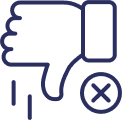
Written by Leonie Dennis
We want to help you make educated healthcare decisions. While this post may have links to lead generation forms, this won’t influence our writing. We adhere to strict editorial standards to provide the most accurate and unbiased information.
From the vast Big Sky landscapes to Yellowstone’s rugged beauty, Montana remains a desirable place to live — and understanding your health insurance options here is key to protecting your health and finances.
As of 2025, the uninsured rate in Montana reflects ongoing improvements due to expanded Medicaid access and steady Marketplace enrollment. If you’re currently without coverage, here’s what you need to know about getting insured in Montana.
Health Insurance Options in Montana
Montana offers a range of health insurance options tailored to residents’ needs, depending on age, income, employment, and family size. Here are the most common coverage types available:
Employer-Sponsored Insurance
Many Montanans receive health insurance through their employer. If your workplace offers coverage, this is usually the most cost-effective and convenient option.
ACA Marketplace Plans
The Affordable Care Act (ACA) allows individuals and families to buy health insurance through the federal Marketplace. These plans offer essential health benefits, free preventive care, and protection for preexisting conditions.
You may also qualify for subsidies to lower your premiums.
Use our ACA Subsidy Calculator to check your eligibility.
Starting this year, the Centers for Medicare & Medicaid Services (CMS) is requiring income verification to confirm eligibility for premium subsidies. As part of this effort, CMS will reduce the ACA subsidies by $5 per month for individuals who are automatically re-enrolled in fully subsidized plans without verified eligibility.
ACA Plan Types
ACA marketplace plans come in Bronze, Silver, Gold, and Platinum tiers, each with different costs and coverage levels. Plans also vary by provider networks and out-of-pocket expenses, so compare carefully to find what fits your needs.
Marketplace Plans:
- Bronze: Low monthly premiums, higher out-of-pocket costs; ideal for minimal healthcare usage.
- Silver: Moderate costs; eligible for cost-sharing reductions (CSRs).
- Gold: Higher monthly premiums with lower out-of-pocket costs; best for frequent healthcare users.
- Platinum (if available): Highest premiums, lowest out-of-pocket costs.
Metal Tier Breakdown:
|
Metal Tier |
Insurance Company Pays |
Consumer Pays |
|
Bronze |
60% |
40% |
|
Silver |
70% |
30% |
|
Gold |
80% |
20% |
|
Platinum |
90% |
10% |
Short-Term Medical Plans
Short-term medical (STM) plans offer temporary health coverage and can be a practical solution for individuals who are between jobs, recently lost employer coverage, waiting for ACA or Medicare eligibility, or need affordable protection during a coverage gap.
These plans are available in this state and follow federal rules, but they are not regulated by the ACA. That means they can deny coverage based on pre-existing conditions and typically do not include comprehensive benefits like maternity, mental health, or preventive care.
While short-term medical plans are not a substitute for long-term health insurance, they may be ideal in situations where you’re temporarily uninsured—such as after job loss or before new coverage begins—and want short-term protection from unexpected medical events.
STM Plan Enrollment
Unlike ACA-compliant plans, you can enroll in short-term health plans year-round.
Quick Coverage Start: Many short-term plans can begin as soon as the next day after your application is approved.
Medicaid
Montana’s Medicaid program provides free or low-cost coverage for eligible low-income residents. It covers doctor visits, hospital stays, mental health care, prescription drugs, dental, vision, and more.
Medicaid Expansion (HELP Plan)
Montana expanded Medicaid in 2016 under the ACA. The HELP Medicaid Plan covers parents and childless adults who meet income and residency requirements.
Children’s Health Insurance Program (CHIP)
Montana’s CHIP program is called Healthy Montana Kids (HMK). It provides affordable health insurance to uninsured children up to age 19 whose families earn too much for Medicaid but still need support. Benefits include medical, dental, vision, prescriptions, and travel assistance for specialized care.
Student Health Insurance
College students in Montana can remain on a parent’s plan until age 26, enroll in a school-sponsored plan, or purchase a plan through the ACA Marketplace. Depending on income and residency, students may also qualify for Medicaid, CHIP, or a short-term medical plan, making Montana student health insurance both accessible and flexible.
Medicare
Medicare plans are available for residents aged 65+ and younger individuals with qualifying disabilities. Options include:
- Medicare Advantage (Part C)
- Medicare Advantage is an alternative to Original Medicare offered by private insurers to those enrolled in Parts A and B. These plans often include extra benefits and cost protections but typically require using a specific network of providers.
- Prescription Drug Plans (Part D)
- Medicare Part D provides prescription drug coverage for anyone with Medicare, helping pay for medications and many vaccines. Offered by private insurers, these plans vary in cost and coverage and can be joined during specific enrollment periods.
- Medicare Supplement (Medigap)
- Medicare Supplement plans, or Medigap policies, help cover the out-of-pocket costs that Medicare Part A and Part B don’t pay. Since Original Medicare (Parts A and B) lacks an out-of-pocket maximum, these plans can limit your expenses for medical services.
COBRA Coverage
If you’ve recently lost job-based insurance, COBRA allows you to continue your employer coverage temporarily, typically at full cost.
Enrollment Periods in Montana
Open Enrollment for 2026 Coverage:
November 1, 2025 – January 15, 2026
During this period, all eligible residents can apply for, renew, or change their ACA marketplace health plans.
Special Enrollment Period
Available year-round for those experiencing qualifying life events, (QLE), such as:
- Loss of coverage
- Marriage or divorce
- Birth or adoption of a child
- Relocation
- Major change in income
You typically have 60 days from the event to enroll.
Health Insurance Providers in Montana
As of 2025, these insurers typically offer individual and family plans through Healthcare.gov:
Plan availability may vary by county or zip code. Some carriers may also offer standardized plans if your state provides a public option or similar initiative.
A team of licensed insurance agents are here to help you compare plans
Understanding Health Insurance Costs
Before selecting a plan, it’s important to understand these key cost terms:
- Premium: The monthly amount you pay to maintain your health plan
- Deductible: The amount you pay before your insurance begins covering services
- Copayment (Copay): A fixed cost for certain services like doctor visits
- Coinsurance: The percentage of costs you share with your insurer after meeting the deductible
- Out-of-Pocket Maximum: The maximum amount you’ll pay in a year for covered services
- In-Network vs. Out-of-Network: Using in-network providers generally saves you money
Understanding health insurance doesn’t have to be overwhelming. This glossary offers clear definitions of key terms—from agents to costs like copayments, coinsurance, and deductibles—to help you make confident coverage decisions.
Bottom Line
Health insurance in Montana includes many options—whether through your employer, the ACA Marketplace, or public programs like Medicaid and Medicare. By understanding your choices and enrolling during the appropriate time, you can get reliable coverage that protects your health and budget.
Need help choosing a plan? Use our ACA Subsidy Calculator to see if you’re eligible for financial assistance, or speak with a licensed agent to explore your best options.
Thank you for your feedback!
Kaiser Family Foundation. “Medicaid Expansion in Montana.” kff.org. (November 16, 2021).
Kaiser Family Foundation. “Marketplace Enrollment, 2014-2021.” KKF.org (accessed November 16, 2021).
Kaiser Family Foundation. “Marketplace Enrollment, 2014-20121.” kff.org. (accessed November 16, 2021).
Commissioner of Securities and Insurance Office of the Montana State Auditor. “2022 Rate Filings and Rate Review.” Csimt.gov (accessed October 10, 2021).
U.S. Department of Health & Human Services. “HHS Poverty Guidelines for 2021.” aspe.hhs.gov. (accessed October 10, 2021).
Kaiser Family Foundation. “Marketplace Effectuated Enrollment and Financial Assistance.” kff.org (accessed March 2, 2020).
U.S. Government Website for Medicaid. “April 2021 Medicaid & CHIP Enrollment Data Highlights.” medicaid.gov. (accessed October 10, 2021).
Montana Department of Public Health and Human Services. “ACA/FAMILY MEDICAID 005 Table of Standards: Healthy Montana Kids Program-Income (HMK and HMK Plus).” dphhs.mt.gov (accessed October 10, 2021).
U.S. Department of Health & Human Services. “HHS Poverty Guidelines for 2020.” aspe.hhs.gov (accessed October 10, 2021).
U.S. Government Website for Medicaid. “November 2019 Medicaid & CHIP Enrollment Data Highlights.” medicaid.gov (accessed October 10, 2021).
Kaiser Family Foundation. “Total Number of Medicare Beneficiaries.” kff.org (accessed October 10, 2021).
Kaiser Family Foundation. “Medicare Prescription Drug Plans: Stand Alone PDP Enrollment.” kff.org (accessed October 10, 2021).
Montana Commissioner of Securities & Insurance. “New Short-Term Health Insurance Plans Can Be In Place Next Week.” csimt.gov, September 28, 2018. (accessed October 10, 2021).







